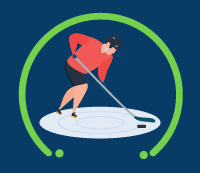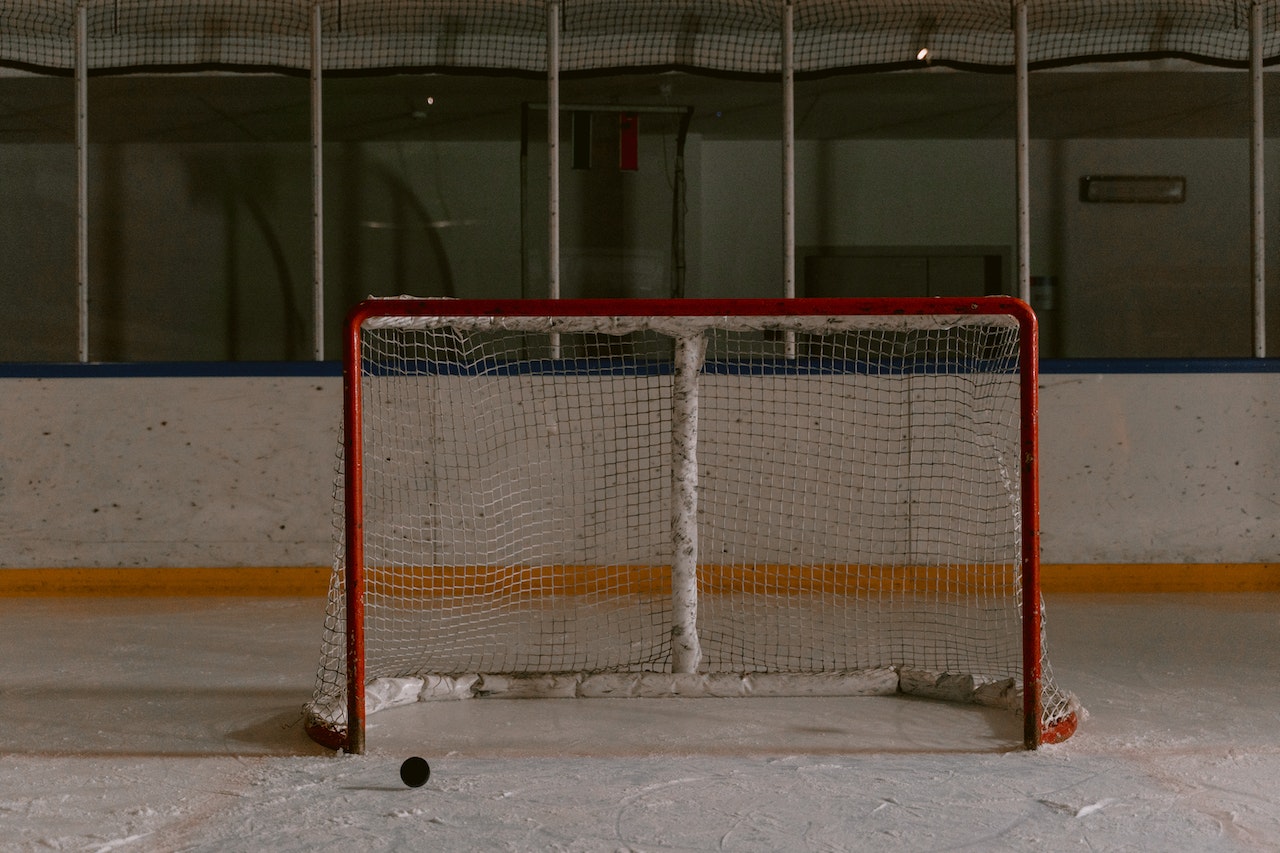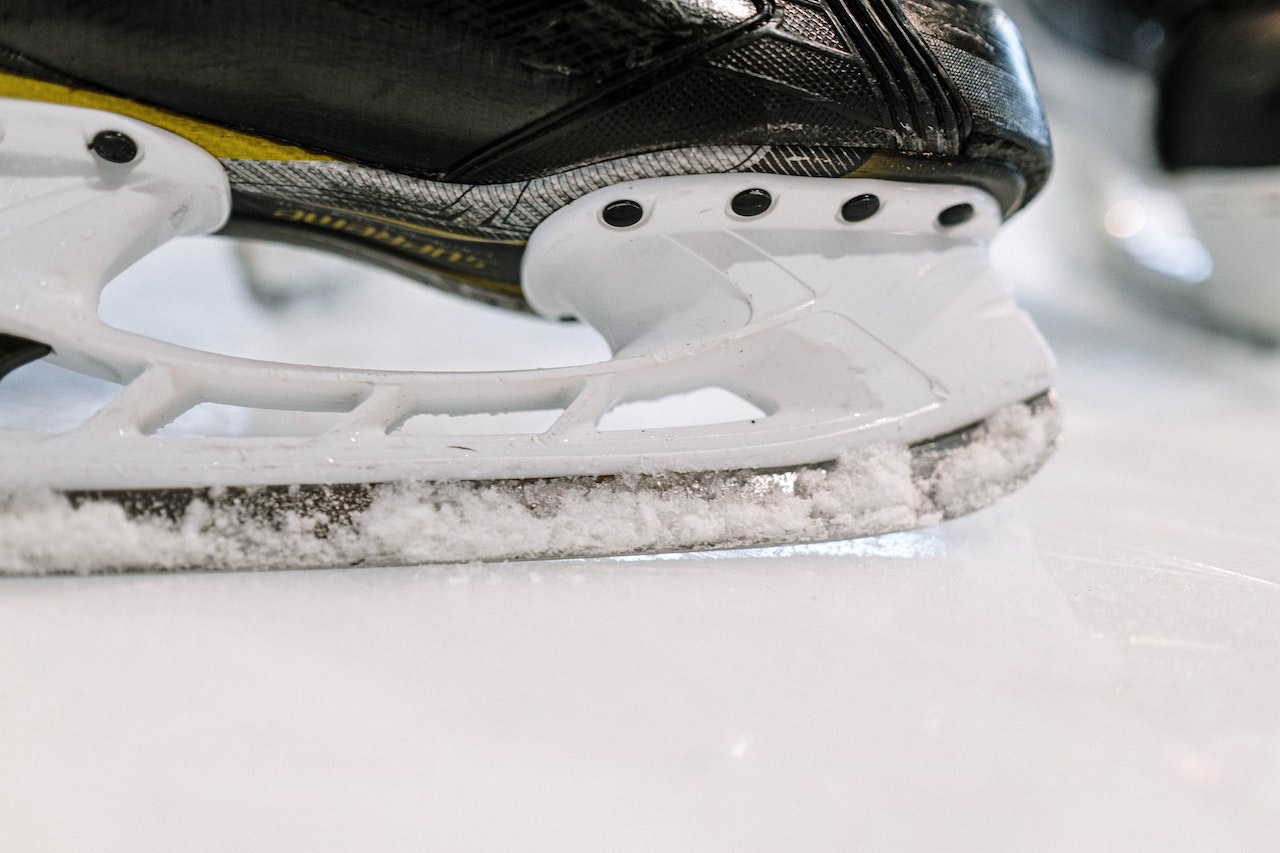Drawing from my years of experience on the ice, I firmly believe that perfecting your shooting skills is a key stepping stone to success in hockey. It’s not just about scoring; it’s about boosting confidence and enhancing on-ice effectiveness.
No matter your current skill level, there’s always room for growth. Success in hockey comes from the fusion of physical prowess with persistent skill refinement.
Your journey in hockey should always be about honing your abilities. It’s not a one-time effort, but a constant commitment to improving your techniques each time you step on the ice.
Now, let’s dive into the heart of shooting techniques. I’ll share exclusive tips and drills, born from my personal experience, to sharpen your shooting abilities. So, strap on those skates and get ready to elevate your game!
Fundamental Ice Hockey Shooting Techniques
As an ice hockey player, understanding and mastering various shooting techniques is essential. Let me take you through the four primary techniques I use regularly and offer some tips to enhance your execution.
Wrist Shot
The wrist shot is the first technique you should learn. It’s a fundamental shot where accuracy takes precedence over speed. To execute a wrist shot, position the puck at the heel of your stick blade. Gradually move it towards the toe while shifting your weight from your back foot to your front foot. This creates a sweeping motion that sends the puck towards the target with precision.
Slap Shot
The slap shot is all about power, even though it can sometimes sacrifice accuracy. The key to a great slap shot is the wind-up and the flex of the stick. Lift your stick off the ice and bring it down hard, hitting the puck with all the force you can muster.
Snap Shot
The snap shot is a hybrid, combining elements from both the wrist and slap shots. It’s quick to execute and often more accurate than a slap shot. To perform a snap shot, snap your wrists swiftly while shooting the puck. No full wind-up is required, which allows for a quicker release.
Backhand Shot
The backhand shot is a little trickier to master but can be extremely effective when there’s no time to position the puck for a forehand shot. Execute it similarly to a wrist shot, but keep the puck on the “backhand” side of the blade.
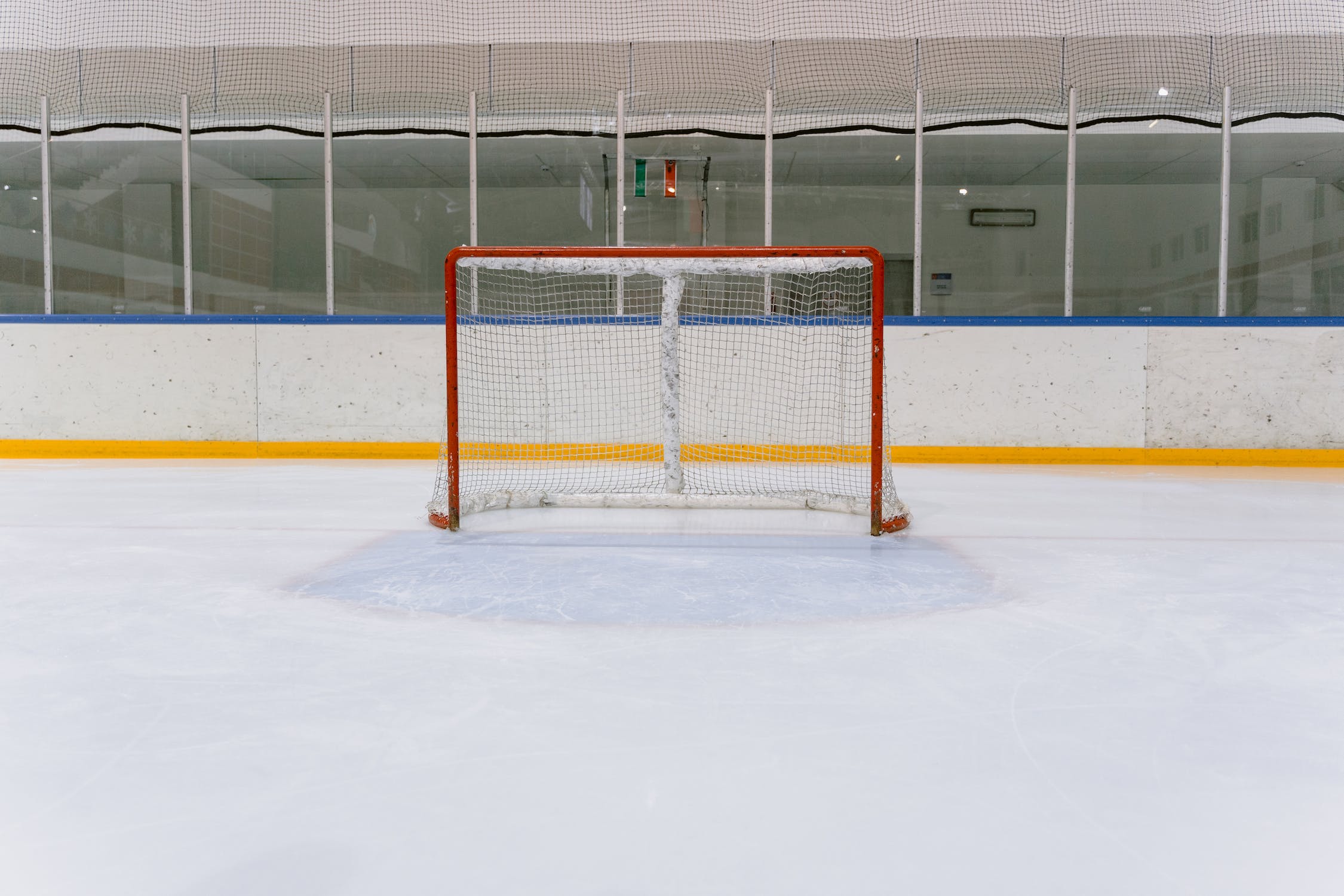
Now, let’s enhance your shooting skills with some tips:
Wrist Shot Tips
- Always keep your eyes on the target.
- Use your body weight to add power to the shot, shifting from your back foot to your front foot during the shot.
- Follow through towards your target, pointing your stick blade at the target at the end of the shot. This will improve your accuracy.
Slap Shot Tips
- Aim to strike the ice just before the puck. This leverages the flex of the stick and adds power to the shot.
- Keep your eyes on the target and not on the puck. It’s about where you want to send the puck, not where it currently is.
- Just like with the wrist shot, transfer your weight from your back foot to your front foot and follow through towards the target.
Snap Shot Tips
- The secret to a good snap shot is a quick release. Practice snapping your wrists quickly to improve this.
- Position the puck towards the middle of your stance. This ensures proper blade contact and helps with control.
- Always follow through towards your target. This will guide the puck’s direction.
Backhand Shot Tips
- Roll your wrists to prevent the puck from flipping up. This helps maintain control of the puck.
- Use your legs and core to generate power, not just your arms. This will give your shot more strength.
- Practice often. The backhand shot is often seen as more difficult due to the unfamiliar positioning of the stick and puck, but with continuous practice, it becomes an invaluable part of your arsenal.
Remember, practice and persistence are the keys to improvement. Keep working on these techniques, refine your execution, and you’ll see progress in your shooting skills.
Check out below table. It gives a concise overview of which hockey position typically use each shooting technique and in what common situations they might be used.
Ice Hockey Shots: Positional Tactics and Timing
| Technique | Recommended for Position | Common Situation |
|---|---|---|
| Wrist Shot | All positions | When precision and accuracy are needed over power |
| Slap Shot | Defensemen, Forwards | When maximum power is needed, typically from further out |
| Snap Shot | Forwards | When a quick release is needed, often in closer quarters |
| Backhand Shot | All positions | When there's no time to position the puck for a forehand shot |
Important Keys to Accurate and Powerful Shooting
Ice hockey shooting demands a blend of technical abilities, physical characteristics, and mental focus. Players should concentrate on learning and perfecting the following crucial components in order to consistently succeed in this facet of the game
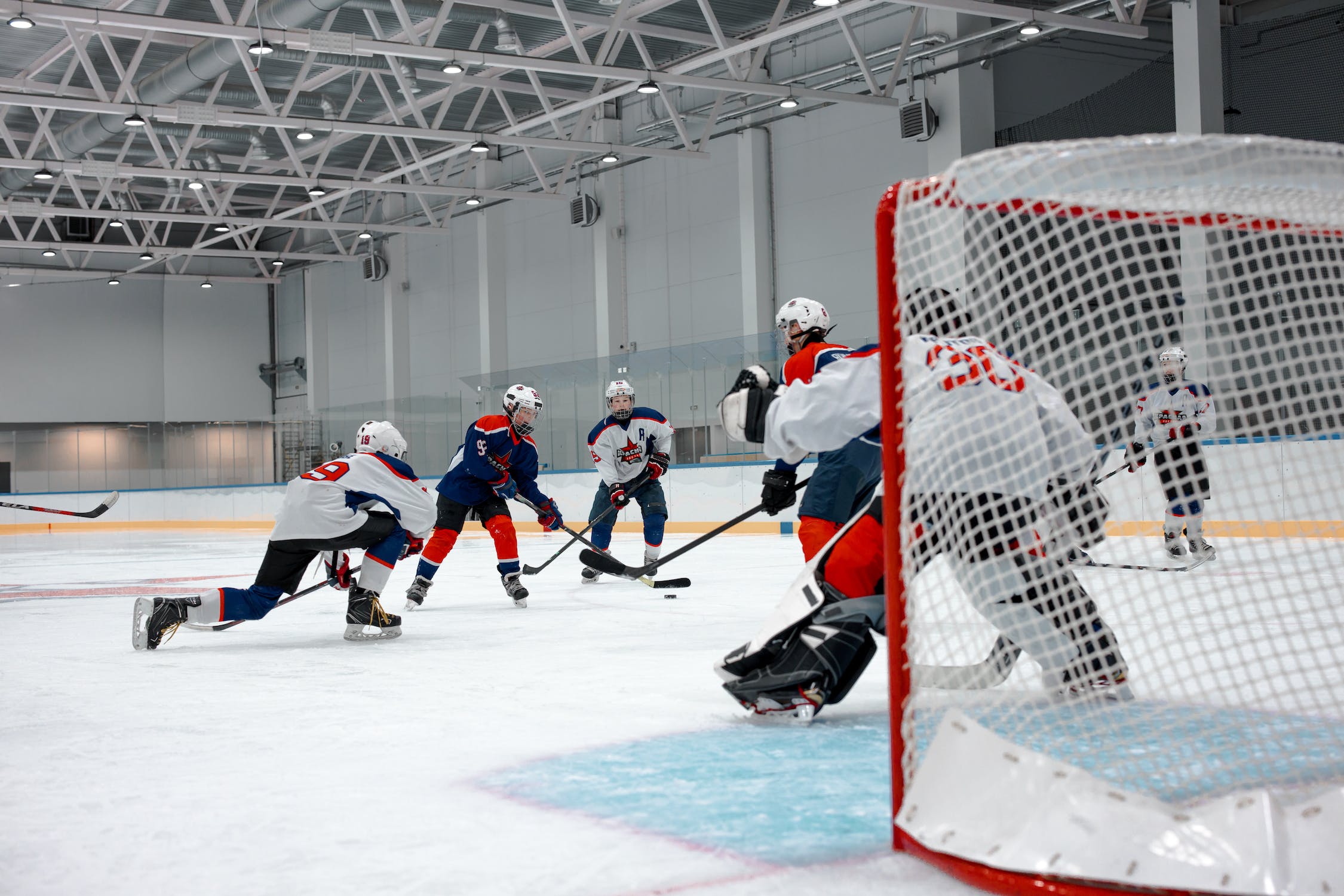
-
Proper body positioning
Accuracy and power are built on a strong foundation of shooting technique. When using appropriate shooting tactics in ice hockey, proper body alignment is crucial. It significantly contributes to a player’s shot’s power, precision, and overall effectiveness. When taking shots, players should practice good body alignment, balance, and weight transfer.
-
Puck control and stickhandling
In ice hockey, stickhandling and puck control are crucial abilities that have a direct impact on a player’s capacity to use the right shooting tactics. Players that can stickhandle well are better able to defend the puck from opponents, avoid checks, and move through confined places. These abilities help players maintain possession, create scoring opportunities, and ultimately produce precise and potent shots.
-
Weight transfer and follow-through
In ice hockey, weight transfer and follow-through are crucial elements of good shot technique. They support a player’s shot’s strength, consistency, and accuracy. For a shot to have power, proper weight transfer is essential.
# Tips To Master These Aspects:
- Prior to the shot, pay attention to keeping a sturdy and balanced posture.
- For maximum control and accuracy, practice your stick grip and hand placement.
- Work on keeping your eyes on the puck while shooting and stickhandling.
- Spend time practicing various shot techniques, such as wrist shots, snap shots, and slap shots.
- Try out various release angles and spots to keep goalies off-guard.
- Exercise off the ice to increase flexibility, build core and upper body strength, and enhance flexibility.
- Maintaining a complete range of motion through frequent stretching enables more potent shots.
- To create muscle memory, concentrate on regularly hitting certain parts of the net.
- To improve your mental focus, see yourself making successful shots before you take them.
- You may enhance your technique, confidence, and overall shooting ability by practicing regularly.
Note: Keep in mind that developing your shooting abilities requires time and work. Your development as a hockey shot will be aided by regular practice, attention to detail, and a desire to learn and adapt.
Advanced Shooting Techniques & How to Use Them in Game?
Ice hockey’s advanced shot methods are specialized talents that take practice, timing, and accuracy to perfect. These methods go beyond the wrist, snap, and slap shots that are the foundation of the game and are utilized to open up scoring opportunities in more complicated game scenarios. These strategies can improve your hockey abilities and provide your offensive toolkit with more versatility. Here are three advanced shooting strategies you might want to include in your game:
One-Timers
Strong shots known as one-timers are made without pausing or cradling the puck. This move needs to be executed with exact timing and cooperation from a teammate who makes a rapid pass. You immediately position yourself to receive the puck as it approaches and then you swiftly release a shot in a single move.
Key Tips:
- To foresee and take advantage of one-timer possibilities, communicate with your teammates.
- For a rapid and precise shot, place yourself in open areas and maintain a good body stance.
- To connect with the puck properly and generate the most power, work on your timing and hand-eye coordination.
Deflections and Redirections
The trajectory of the puck must be changed during deflections and redirections in order to shift its course toward the goal. You use your stick or body to deflect the ball rather than taking a direct shot, making it harder for the goalie to make a stop.
Key Tips:
- Set up shop in front of the goal to set up screens and obstruct the goalie’s field of vision.
- Practice accurately and precisely tipping or diverting the puck.
- Position yourself to deflect the puck toward the goal as your teammates shoot.
Wraparounds
Wraparounds entail carrying the puck behind the net of the other team and firing it rapidly toward the opposing goal. This tactic takes advantage of goalies’ lack of readiness to defend the far side of the net.
Key Tips:
- Carry the puck behind the net and accomplish the wraparound using quick feet and agility.
- Maintain control of the puck while protecting it from defenders using your body.
- To score, practice placing your shots precisely to fool the custodian.
It’s time for PRO TIP
You may become a more adaptable and effective player by incorporating these advanced shooting tactics into your game. Keep in mind that mastering these skills needs effort, perseverance, and patience. Master the art of scoring goals in ice hockey through practice and perseverance.
Shooting Drills to Enhance Skills & Develop Better Strategies
Ice hockey shooting drills, such as rebound and recovery drills, quick-release drills, and target shooting drills, have several advantages for players wishing to improve their abilities. Players wishing to improve their shooting abilities and contribute to the offense more effectively on the ice by implementing these workouts into their daily training regimens.
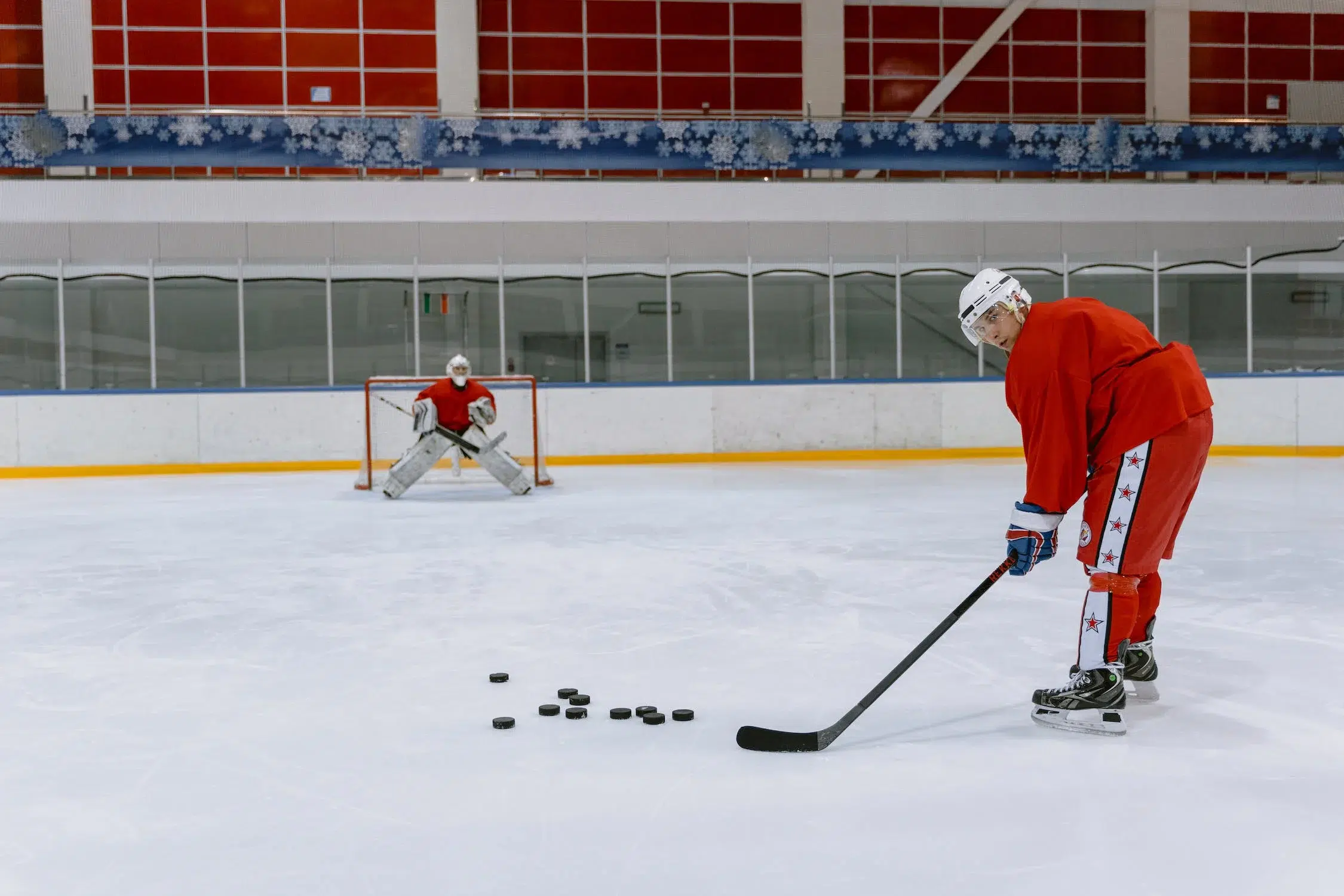
Target Shooting Drills
Target shooting exercises target particular regions of the net in an effort to increase accuracy. Set up targets in various places, such as the top shelf or corners, and practice consistently striking them.
Benefits For Players
- Players can increase their scoring potential by training their muscles to regularly reach their intended places by concentrating on hitting specific targets.
- Target shooting drills help players improve their decision-making skills in game scenarios by encouraging them to evaluate the goaltender’s positioning and select the ideal areas of the net to fire at.
- Players can execute precise shots during games by developing muscle memory by repeatedly hitting particular targets.
Quick-Release Drills
Quick-release drills are designed to help you shoot faster, fooling goalies and creating more opportunities to score. These exercises emphasize quick puck release, hand-eye coordination, and accurate shooting. Ice hockey quick-release routines are designed to help players improve their puck-release speed and accuracy.
Benefits For Players
- Quick-release drills teach players to shoot the puck quickly, reducing the amount of time goalies must react. This advantage in speed can increase scoring opportunities and put more strain on the defenses of rival teams.
- As players practice receiving passes and shooting in a single fluid motion, these drills help a player’s hand-eye coordination. This improves their capacity to make contact with moving pucks and fire precise shots in competitive settings.
- Quick releases can produce deception by catching goalies off guard with unexpected shots. Players can boost their chances of scoring by becoming experts at quick-release routines and keeping goalies off balance.
Rebound and Recovery Drills
In some circumstances where players must respond fast to capitalize on rebounds, rebounding and recovery drills are used in those situations. These ice hockey drills are created to enhance a player’s capacity to take advantage of loose pucks and scoring possibilities following rebounds.
Benefits For Players
- Players that participate in rebound drills gain the positioning and timing skills necessary to seize scoring opportunities and pounce on lost pucks.
- Players’ hand-eye coordination improves through practicing picking up rebounds and responding quickly, enabling them to monitor the puck and make quick decisions on their follow-up shoots.
- Players learn to retain their attention and keep competing for lost pucks through rebound and recovery drills. In specific circumstances where players must fight tirelessly for second and third scoring chances, tenacity pays rewards.
Below table provides a collection of ice hockey shooting drills designed to improve accuracy, timing, quick release, balance, and other key aspects of shooting technique.
| Drill Name | Description | Key Focus Areas | Equipment Needed |
|---|---|---|---|
| Shooting Agility Drill | Incorporates agility movements while shooting, improving balance and quick release. Players navigate through cones or obstacles before taking a shot. | Agility, Balance, Quick Release | Cones, Pucks, Shooting Area |
| Backhand Shooting Drill | Focuses specifically on developing accurate and powerful backhand shots. Players practice shooting with the puck on the backhand side of their stick. | Backhand Shot Technique, Accuracy | Pucks, Shooting Area |
| Rebound Control Drill | Works on shooting rebounds by having players shoot at a goalie or a rebound board, then quickly follow up and score on the rebound. | Rebound Control, Quick Reaction | Goalie or Rebound Board, Pucks |
| Screened Shooting Drill | Simulates shooting with traffic in front of the net. Players practice finding shooting lanes and getting shots through defenders. | Shooting through Traffic, Accuracy | Net, Defenders, Pucks, Cones or Targets |
| Breakaway Shooting Drill | Replicates game-like breakaway situations where players practice shooting on a goaltender in a one-on-one scenario. | Breakaway Technique, Goal Scoring | Goalie, Pucks, Shooting Area |
Significance of Scoring Strategies and Shot Selection
Scoring tactics and shot selection are crucial since they have a big impact on a team’s offensive performance. Increased scoring opportunities and increased possibilities of scoring can result from knowing when and how to shoot successfully. Successful ice hockey offenses must incorporate both scoring plans and shot selection.
Here are some examples of scoring strategies in ice hockey:
Shot Placement:
Instead of just shooting at the goalie, players aim for the top shelf, the corners, or other parts of the net where there is a larger chance of a goal. By employing this tactic, the chances of scoring are increased, and the custodian must make difficult saves.
Timing and Opportunism:
Quick shooters catch goalies off guard, giving them less time to respond and boosting the likelihood of a goal. When shooting at close range or under pressure, quick-release rounds are especially useful.
Game Situation Awareness:
Players seek passing lanes and shooting possibilities to take advantage of the opposition’s penalty kill when they have an additional skater available. Finding openings and producing excellent scoring opportunities becomes quite important when choosing shots.
Looking to improve your ice hockey shooting skills? Check out our articles on ice hockey skills and off-ice training for valuable tips, techniques, and exercises. Additionally, our ice hockey tips section provides expert advice to take your shooting game to the next level. Explore these resources today and elevate your shooting skills on and off the ice!
Frequently Asked Questions (FAQs) on Ice Hockey Shooting
What are some key techniques to improve accuracy in ice hockey shooting?
To enhance accuracy, focus on proper weight transfer, keeping your eyes on the target, and following through towards the desired location.
Which shooting technique is most effective for generating power in ice hockey?
The slap shot is known for its ability to generate significant power due to the wind-up and stick flex, making it a popular choice when maximum shot power is required.
Are there specific drills that can help improve shooting skills on the ice?
Yes, various drills such as shooting accuracy drills, one-timer drills, and shooting in stride drills are designed to develop shooting skills, enhance timing, accuracy, and the ability to shoot while in motion.
Conclusion
Consistent practice of shooting techniques and drills is the secret sauce to developing muscle memory. This enables us to execute necessary movements almost instinctively, without a second thought, even under high-pressure situations. This practice enhances not just our consistency and muscle memory, but also our self-confidence and adaptability. It’s these components working together that amplify our shooting skills, helping us as individual players and, more importantly, strengthening our team’s overall performance.
So, keep practicing, keep improving, and remember, every shot you make takes you one step closer to becoming the hockey player you aspire to be.
All the best for your next game!
Master Your Ice Hockey Skills with Expert Resources
Explore our range of informative articles to enhance your ice hockey journey. From understanding body checking in hockey to perfecting your goaltending skills, mastering skating drills, discovering top hockey brands and equipment, choosing the right helmet, optimizing your nutrition, and grasping the rules of the game, our resources cover all aspects of ice hockey.
- Body Checking in Hockey: Techniques and Safety Guidelines
- Mastering Ice Hockey Goaltending: Tips and Techniques
- Improve Your Skills with Effective Ice Hockey Skating Drills
- Top Hockey Brands: Quality Equipment and Apparel for Success
- Exploring Types of Hockey Helmets for Optimal Protection
- How to Buy a Hockey Helmet: A Comprehensive Guide
- Fuel Your Performance with Effective Ice Hockey Nutrition
- Understanding Icing in Hockey: Strategies and Impact on the Game
- Essential Ice Hockey Equipment for Performance and Safety
- Master the Ice Hockey Rules: Key Regulations for Fair Play
- Understanding Hockey Power Plays
- How many periods are in hockey?
Take your ice hockey skills to the next level with our expert resources. Whether you’re looking to improve your checking techniques, enhance your goaltending abilities, refine your skating with drills, explore top hockey brands and equipment, understand helmet options, optimize your nutrition, or grasp the rules of the game, we have the information you need to succeed.
